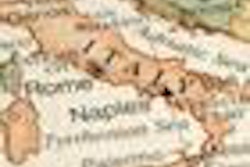Dear Women's Imaging Insider,
Welcome to the latest roundup of the Women's Imaging Digital Community, where you'll find a slew of intriguing stories.
First up, it's well known that ultrasound has some limitations, namely operator dependence and thus a lack of reproducibility. What's the solution? German researchers conclude the answer lies in automated breast volume scanning (ABVS). ABVS combines automation and 3D scanning. Find out how the modality stacks up against handheld ultrasound.
At last year's ECR it was declared that in 10 years digital breast tomosynthesis would replace digital mammography as the first-line screening method for breast cancer. Are we perhaps closer to that reality than we think? Staff writer Kate Madden Yee explores this issue and reports on a recent study dictating what sort of research is needed to move digital breast tomosynthesis into the clinical mainstream.
While you're in the community, be sure to check out two other stories on tomosynthesis, both from ECR 2013. In one, Spanish researchers found adding digital breast tomosynthesis to digital mammography increased the breast cancer detection rate from 1.26% to 2.03%. Click here to view the story.
In the other article, researchers delve into why tomosynthesis is so exciting and what research is underway.
Also from ECR 2013:
- Adding dense breasts as a new standard indication for MR mammography in cases with unclear findings could ward off approximately 88% of biopsies and end up saving insurance companies money.
- Factoring in menopause to breast elasticity may help improve the diagnostic performance of breast sonoelastography.
- Breast MRI of mammographically detected microcalcifications is of added diagnostic value, but only by expert radiologists, according to Dutch researchers. However, the conclusions sparked a controversy at the conference. Read about the debate.
Head over to the Women's Imaging Digital Community to scope out other articles that are sure to pique your interest. As always, I love to hear from you, so keep me posted on how we're doing and what you'd like to see more of.




















